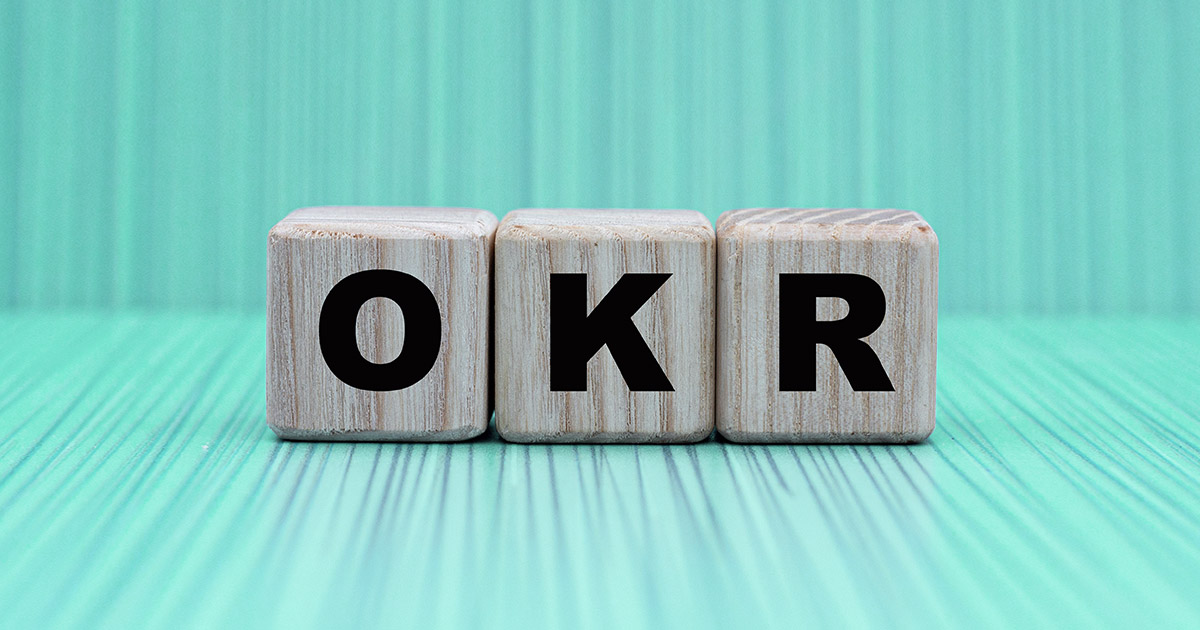December 13, 2021
OKR Framework: Commit, Prioritize And Stretch Your Goals

The OKR framework, when implemented correctly, can turn the organization’s mission into a tactical plan of action. Be it addressing new business risks, launching new features or developing an agile form of strategic execution, the right OKRs in business develop a collaborative mindset that keeps the teams engaged, accountable and laser-focused on the goals.
In simple words, OKR goal-setting framework helps teams and organizations achieve their goals through identifiable and measurable results. The OKR framework can be adopted by all teams to create a standard the whole company can adopt. Objectives and Key Results give purpose to teams and organizations.
In other methods, goals are simply set and teams struggle to achieve them. However, in the Objectives and Key Results framework, you first set goals and then define the key results needed to measure the success of those goals.
Goals are set across three levels, first at the top where the stakeholders decide annual long-term objectives. Then, at the team and management level, these goals are broken into smaller cycles. Finally, at an individual level, these goals are managed on a weekly or biweekly check-in cadence.
If you are looking to establish an OKR framework wherein everyone in the team aligns to the same goals, follow these three steps to reap the maximum benefits.
#1. Commit to your goals – The Society of Human Resource Management surveyed 600 respondents and reported only 30% of employees were satisfied with how their work contributed to the overall success of the company.
This highlights the importance of setting impactful OKRs so that every employee and department knows what to do. The OKR framework should facilitate a top-down strategy for setting company goals and aligning them with different teams. When you create organization-wide alignment, everyone understands the top priorities and vision and contribute towards business success.
Read more: Reasons why leaders choose objectives and key results
#2. Prioritize your OKRs – Once you have a list of OKRs that matter, the next step is to prioritize them. To make the most of the OKR methodology, limit yourself to 3-5 objectives. Ensure that each objective has no more than 5 key results. The key results should be measurable and time-bound. When everything feels important, narrowing down your goals is tough.
However, it is important to go through this exercise because lack of prioritization can lead to stagnation which is a killer for any business looking to compete in today’s dynamic economy.
#3. Stretch for amazing results – When using the OKR framework, the idea is to set harder, more challenging goals to push the team to achieve more. The notion of stretch or moonshot goal is not only to achieve 100% of any goal, instead of setting ambitious goals and not being upset if you achieve 70-80% of that goal. If your team is achieving every goal, chances are you are doing it wrong. Set stretch goals to push your employees farther.
Managers need to communicate with their team that it’s okay if every goal is not achieved. OKR systems should be adjusted in case of unforeseen circumstances and opportunities. Study the past data and OKRs before setting new goals, as they reflect what your employees can achieve. Stretch goals in the OKR framework encourage employees to take risks, think creatively about new strategies and achieve lofty goals.
Read more: Implementing OKR methodology the right way: Key Aspects
Importance of OKR software in implementing the OKR framework
OKRs allow businesses to bridge the gap between OKRs goal setting and execution by linking company and team objectives to key results.
Using the OKR framework, leaders and teams can prioritize, align and measure the outcome of their efforts.
Unlock OKR makes the adoption of Objectives and Key Results easier and serves as a collaborative environment where teams can get aligned on the company vision and goals get achieved. Key features include people map, goal map, align and assign, feedback and reporting. Book a demo today and get started!